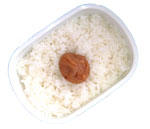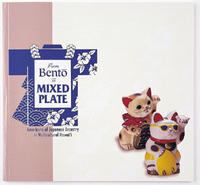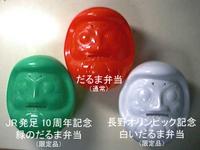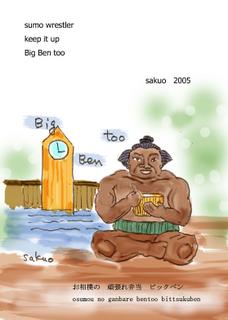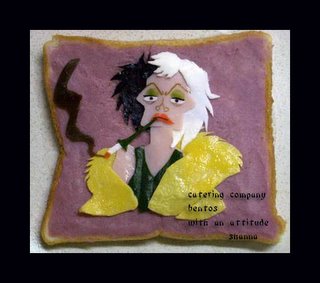[ . BACK to Worldkigo TOP . ]
:::::::::::::::::::::::::::::::::::::::::::::::::::::::::::::::::::::::::::::::::::::::::::::::::::::
Light offerings afloat (tooroo nagashi)
***** Location: Japan
***** Season: Early Autumn
***** Category: Observance
*****************************
Explanation
Lantern offerings, lantern offerings on the water, lantern drifting, lantern floating, lantern festival
tooroo nagashi 燈籠流 (とうろうながし)
..... shooryoo nagashi 精霊流し(しょうりょうながし)
ryuutoo 流燈(りゅうとう) ryuutoo e 流燈会(りゅうとうえ)
The Japanese festival for the souls usually takes place at
O-Bon in August. It has many traditional acitvities which are all kigo for this season. We will explore those in a different entry.
Here we are concerned with the light offerings during this season.
To send an offering off to the sea, most auspiciously toward the west where the Paradise of the West with the souls of thouse passed away were residing, is an old custom in Japan. In olden times it could happen in Shikoku and other areas to send off boats with living people, mostly monks, and food for three days... on a tour straight to paradise.
One of the popular light offerings is the floating of lanterns, a form of a light offering to the souls. The lanterns represent the souls of the depassed ondes. Usually it is accompanied by a firework display.
Offerings of Light、toomyoo kuyoo 灯明供養

© Photo Gabi Greve
Read more about it here:
. Koyasan Light Offerings - Wakayama .
Other words related to the fire ceremonies during the O-Bon season.
welcome fire, mukaebi, mukae-bi 迎え火
fire at the house corner, gate-fire, kadobi 門火
tama mukae, tamamukae 魂迎え(たまむかえ) welcoming the soul
..... shooryoo mukae 精霊迎え(しょうりょうむかえ)
ogara 苧殻 (おがら) string made from hemp (to light the mukaebi)
..... asagara 麻殻(あさがら)、asagi あさぎ
ogarabi 苧殻火(おがらび)fire lit with hemp string
kababi 樺火(かばび)fire lit with beech wood
tama matsu 魂待つ(たままつ) waiting for the souls
bonbi 盆火(ぼんび)
Bon-fire
shooryoobi 精霊火 (しょうろうび) fire for the souls
This is lit on the first day of O-Bon at the entrance of each home to welcome the souls of the ancestors back. In many rural areas it is lit in the middle of the main access road to the farm estate. When a person of the household had died within the last year the ceremonies for the first O-Bon (hatsu-bon) are especially rich and the welcome fire is most important to show him how he is missed.
(Some Internet and other sources quote "okuribi" as "welcome fire", but this is not correct, see below.)
................................................
daimonji 大文字 (だいもんじ)
Daimonji fire
..... daimonji no hi 大文字の火(だいもんじのひ)
Myoohoo no ni 妙法の火(みょうほうのひ)
funagata no hi 船形の火(ふながたのひ)
toriigata no hi 鳥居形の火(とりいがたのひ)
sebi 施火(せび)
................................................
fire for seeing off the souls, send-off fire, okuribi 送り火
This takes place on the last day as a ritual for the family at home and at some places it developed to big festivals, the mosts famous is possibly the
Great seeing-off fire in Kyoto, Daimonji-Yaki 大文字焼き
August 16, at Higashiyama Kyoto
Kyoto Gozan Okuribi 京都五山送り火
 http://www.dicube.co.jp/e-kyoto/gozan_okuri/
http://www.dicube.co.jp/e-kyoto/gozan_okuri/
.........................
Gozan no Okuribi (五山送り火), more commonly known as Daimonji (大文字), is one of the iconic festivals of Kyoto, Japan. It is the culmination of the O-Bon festival on August 16th, in which five giant bonfires are lit on mountains surrounding the city. It signifies the moment when the spirits of deceased family members, who have been visiting this world during O-Bon, are believed to be returning to the spirit world — thus the name Okuribi (送り火) (roughly, "send-off fire").
The origins of the festival are obscure, but it is believed to be ancient. Specific families have the hereditary duty of organizing all the logistics of the bonfires, and they spend many hours annually providing volunteer labor to maintain this tradition.
Starting at 8PM, the giant bonfires are lit, each with a distinctive shape. Three of the fires form giant Japanese characters, and two form familiar shapes.
© Read more in the WIKIPEDIA !
.........................
This ceremony is also called according to the various forms of the fires. On the below illustration, you can look at them with the Gate on the left, Dai 大 on the right and the others inbetween. They are spread on five mountains (gozan 五山).
 http://www.pref.kyoto.jp/en/01/01-04-04.html
http://www.pref.kyoto.jp/en/01/01-04-04.html
Great Left Dai Fire, Sadai 左大
Fire of the Great Law, Myoohoo no hi 妙法の火
Fire in the form of a gate, toriigata no hi 鳥居形の火
Fire in the form of a boat 舟形の火
This fire is now the bringer of autumn to the Kyoto population. In special parts of the forest large fires are lit, in the form of DAI 大, maybe representing the gread deity
Dainichi Nyorai, there are 75 large piles of firewood lit at the same time.
Another fire takes the form of the letter MYOO 妙 (125 piles of wood) and HOO 法 (75 piles), representing the Buddhist teaching. Fires in form of a boat for sending off the souls are also common when these fires offerings are performed in other cities, for example.
The form of a gate (torii)in Kyoto is made of 108 bonfires, where people run up and down the mountain to place the piles of firewood, so it is a kind of "running fire".
Hakone Daimonji-yaki
Nara no Daimonji Okuribi (with 108 piles of firewood) which is now the largest in Japan.
................................................................
Ceremony of ten thousand lights (mandoo-e 万灯会, 万燈会)
at the Temple Toodai-ji on August 15,
also
Sentoo Kuyoo 千燈供養
Light Offerings : Koya San in Wakayama
.................................................................................

hootooe, hootoo e 奉燈会 (ほうとうえ)
light offerings
mandoo e 万燈会(まんどうえ)
yoi Kooboo 宵弘法(よいこうぼう)
at temple Daikaku-ji in Saga, Kyoto 大覚寺
August 20
This is the night before the monthly memorial day of Kobo Daishi.
The lights from the hall reflect beautifully in the great pond before the temple.
................................................................
108 Fires, hyakuhattai, hyakuhatchitoo 百八燈
On August 15, at Nambu Town, Yamanashi Prefecture
 http://www.town.nanbu.yamanashi.jp/kankou/himatsuri/himatsuri-tourou.htm
http://www.town.nanbu.yamanashi.jp/kankou/himatsuri/himatsuri-tourou.htm
Also called
Fire Festival of Nambu, Nambu no himatsuri 南部の火祭り
108 Pine Torches, hyakuhachi kyoomyoo 百八松明
hyakuhachi tai 百八たい (ひゃくはちたい)
nagetaimatsu 投松明(なげたいまつ)"throwing torches"
nagendei なげんでい
This festival is held as a seeing off for the souls and also to pray for the protection of the rice fields from insects, a form of
seeing off the beetles, mushi okuri.
. mushi oi 虫追い(むしおい)seeing off the insects, bugs and beetles
mushiokuri 虫送り (むしおくり) seing off the bugs
Sanemori matsuri 実盛祭 Sanemori festival
and more KIGO
108 (hyakuhachi) is a symbolic number in Buddhism, representing the 108 illusions (bonnoo 煩悩) of the human mind.
Bonnoo, the worldly desires, a haiku topic
*****************************
Worldwide use
Hawaii
Two girls watch one of about a thousand lanterns set afloat in the waters off of Ala Moana Beach near Waikiki in Honolulu, Hawaii
May 30, 2005.
The annual paper lantern floating ceremony called
'Toro Nagashi' is held yearly to honor the dead. The paper lanterns float on a wood or bamboo base and each lantern carries the name of the person being remembered and can also include a special message for the spirit. The lanterns are set afloat to guide the spirits on a safe journey over the ocean to their spiritual home.
 http://tinyurl.com/8qrfc
http://tinyurl.com/8qrfc
:::::::::::::::::::::::::::::::::::::::::::::::::::::::::::::::::::::::::::::::::::::::::::::::::::::
Mongolia
 in candle light
in candle light
the path for enlightenment
appears
Bulgan mountain is in Tsetserleg city, where I live. On the 15th of each month by lunar calendar people from Tsetserleg light candles on this mountain.
- Shared by Zaya Nergui -
Joys of Japan, 2012
*****************************
Things found on the way
Japanese Links with many pictures about the floating lights.
http://www.dicube.co.jp/e-kyoto/gozan_okuri/ !!!
http://www2.nkansai.ne.jp/org/kasumi-kanko/html/infomation/touro-.html
http://home.att.ne.jp/gamma/shimada/new_page_14.htm
Daimonji
http://www.kansaidoyukai.or.jp/yakei/100kei/matsuri/html/931p-e.html
http://www.pref.kyoto.jp/en/01/01-04-04.html
...................................................................
English essay about O-Bon and the Hina Festival.
http://ml.hss.cmu.edu/courses/Japanese/sm00/culture%20project/culture.smith.html
Safekeep copy is here:
http://groups.yahoo.com/group/Haiku-Essays/message/109
......................................................................
English essay about Okuribi Fires.
There are 3 views about history of Gozan-okuribi. First, Kukai started it in the Heian period. Second, Asikaga Yoshimasa started it in the Muromachi period. Lastly, Konoe Nobutada started it in the Edo period.
Third view is the most popular because it says in a book “annaisha” written in 1662 that Konoe Nobutada started okuribi of daimonji. Anyway it was started in the early modern century. The oldest book about Gozan-okuribi was written in 1603. In 1983 it became an intangible cultural asset. It is a mysterious festival.
Gozan-okuribi is the Bon Festival. Bon is traditional event to pray for the spirits of ancestor. Every year August 16, five mountains are lighted various shapes at night, so this festival is called Gozan-okuribi. Gazan means five mountains. First mountain is Daimonnjiyama part of Higashiyama Nyoigatake in Sakyo ward. Shape of “大” is lighted there. This okuribi is the most famous.
Second, shape of “大” is lighted at Kinkakuji Daimonnjiyama in Kita ward. It is called Hidaridaimonnji. Third, shapes of “妙” and “法” are lighted at Matsugasakinishiyama and Higashiyama in Sakyo ward. Fourth, a picture of gateway at the entrance to a Shinto shrine is lighted at Mandarazan in Ukyo ward. Lastly, a picture of boat is lighted at Nishigamosenzan in Kita ward. This festival is held to see sprits of ancestor the other side. Its beauty make us move of course. It is a religious event and also artistic event.
http://www1.tcue.ac.jp/home1/english/students04/class21/104503/
Japanese Link 日本語:
http://www.kyotokanko.co.jp/kyotosummer/daimomji.html
*****************************
HAIKU
大文字背伸びする娘の背中越し
daimonji senobi suru ko no senaka koshi
Daimonji Fire -
I look over the streched back
of my growing daughter
大文字ノの字の早く絶えにけり
daimonji no ji no hayaku kie ni keri
Daimonji Fire -
the letter DAI
fades so fast
圭子
http://park6.wakwak.com/~zakkayasan/haikuk2.htm
xxxxxxxxxxxxxxxxxxxxxxxxxxxxx
人去って万灯きへて鹿の声
hito satte mandô kiete shika no koe
people depart
ten thousand lanterns dying...
the cry of a deer
同じ年の顔の皺見ゆる灯篭哉
onaji toshi no kao no shiwa miyuru tôro kana
a wrinkled face
he's my age...
lanterns for the dead
草蔓もわざとさらざる灯ろ哉
kusa tsuru mo waza to sarazaru tooroo kana
even grass and vines
don't part willingly...
lantern for the dead
Kobayashi Issa
(Tr. David Lanoue)
http://tinyurl.com/d4kc7

:::::::::::::::::::::::::::::::::::::::::::::::::::::::::::::::::::::::::::::::::::::::::::::::::::::
tooroo o mizu ni oku te o nobashikeri
putting the lantern
to water -
I stretch my arms
Suzuki Masajo
ryuutoo ya futatsu no hashi no kakaru machi
lanterns floating -
in this town
there are two bridges
長沼 紫紅
hyakuhachi koomyoo kieshi makkuro no ame no oto
108 pine torches -
they go out and in the dark
the sound of rain
佐野妙子
Saijiki for Buddhist Events
xxxxxxxxxxxxxxxxxxxxxxxxxxxxx
送り火をこえてショパンの流れけり 波郷
okuribi o koete shopan no nagare keri
above the sending-off fire
the music of Chopin
floats along
Ishida Hakyo
More haiku about the Bon season are here:
http://www.buzan.or.jp/koumyou/144/shuchou.html
*****************************
Related words
*****
Star Festival (Tanabata, Japan)
There is also a floating of lights during this festival, 七夕流し,tanabata nagashi.
:::::::::::::::::::::::::::::::::::::::::::::::::::::::::::::::::::::::::::::::::::::::::::::::::::::
humanity kigo for all summer
 soomatoo 走馬燈 (そうまとう)
soomatoo 走馬燈 (そうまとう)
revolving lamp, revolving lantern
..... mawaridooroo 回り燈籠(まわりどうろう)
They are beautifully decorated and provide a play of light and shade on the wall. They were quite a hobby in the Edo period.
...
Light offerings at Koya San in Wakayama
走馬燈月のひかりをやどしけり
soomatoo tsuki no hikari o yadoshi-keri
revolving lanters
seem to have caught
the moonlight
Kubota Mantaro (Mantaroo) 久保田万太郎
(1889 - 1963)
十二支みな闇に逃げ込む走馬燈
juunishi mina yami ni nigekomu somatoo
twelve zodiac animals
all escape to darkness
of the revolving lantern
Kuroda Momoko 黒田杏子
. Tr. Fay Aoyagi
. . . . . . . . . .
suikajoochin 西瓜提燈 (すいかぢょうちん / 西瓜提灯)
watermelon lanterns
Similar to the pumpkin lanterns for Haloween.
:::::::::::::::::::::::::::::::::::::::::::::::::::::::::::::::::::::::::::::::::::::::::::::::::::::
- Lichtopfer -
Deutsch
. . . . . TEXT
Buddhistische Kultgegenstände Japans
:::::::::::::::::::::::::::::::::::::::::::::::::::::::::::::::::::::::::::::::::::::::::::::::::::::
. tooroo uri 燈籠売(vendor for Bon-lanterns .
[ . BACK to WORLDKIGO . TOP . ]
[ . BACK to DARUMA MUSEUM TOP . ]
:::::::::::::::::::::::::::::::::::::::::::::::::::::::::::::::::::::::::::::::::::::::::::::::::::::





